Suchet Bargoti
Deep Fruit Detection in Orchards
Sep 18, 2017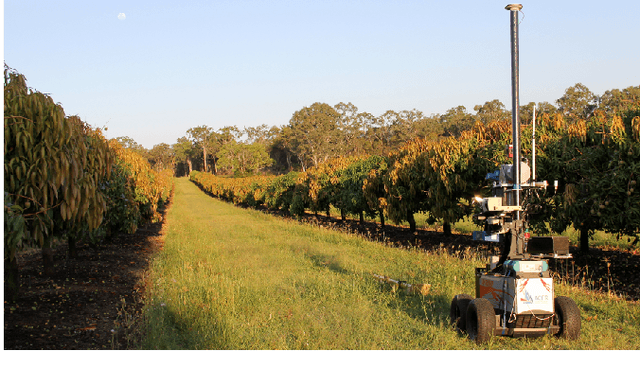

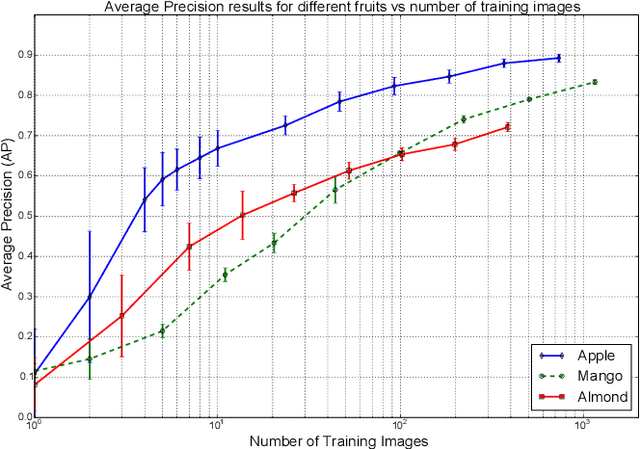
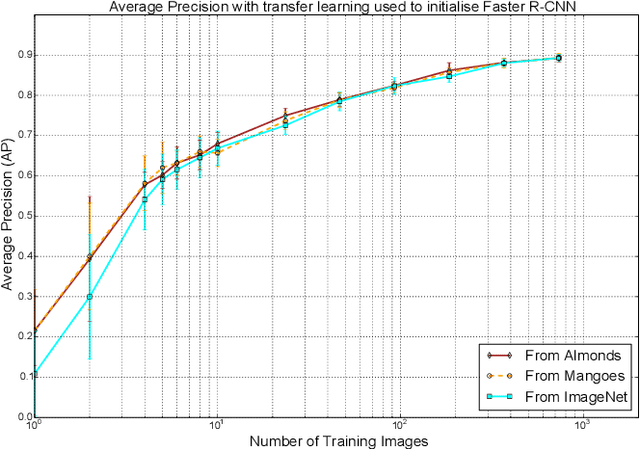
Abstract:An accurate and reliable image based fruit detection system is critical for supporting higher level agriculture tasks such as yield mapping and robotic harvesting. This paper presents the use of a state-of-the-art object detection framework, Faster R-CNN, in the context of fruit detection in orchards, including mangoes, almonds and apples. Ablation studies are presented to better understand the practical deployment of the detection network, including how much training data is required to capture variability in the dataset. Data augmentation techniques are shown to yield significant performance gains, resulting in a greater than two-fold reduction in the number of training images required. In contrast, transferring knowledge between orchards contributed to negligible performance gain over initialising the Deep Convolutional Neural Network directly from ImageNet features. Finally, to operate over orchard data containing between 100-1000 fruit per image, a tiling approach is introduced for the Faster R-CNN framework. The study has resulted in the best yet detection performance for these orchards relative to previous works, with an F1-score of >0.9 achieved for apples and mangoes.
Image Segmentation for Fruit Detection and Yield Estimation in Apple Orchards
Oct 25, 2016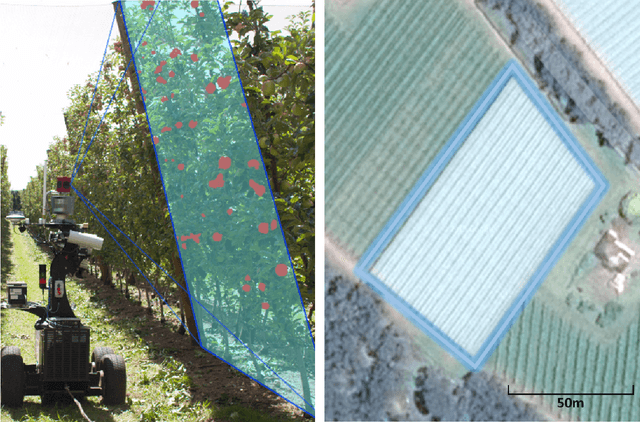
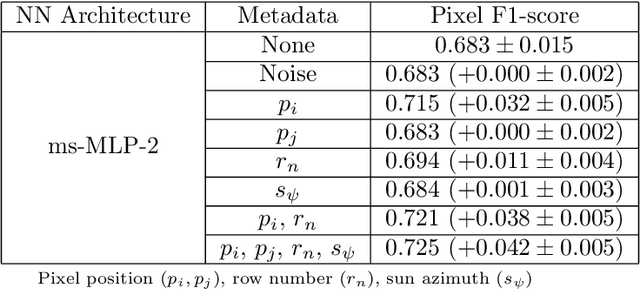
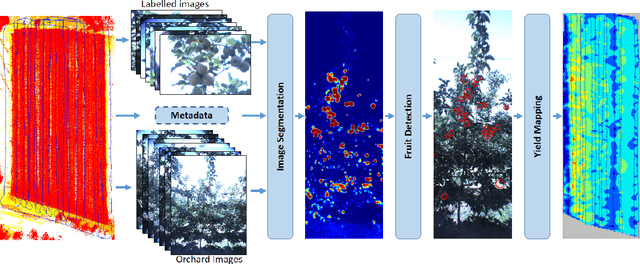

Abstract:Ground vehicles equipped with monocular vision systems are a valuable source of high resolution image data for precision agriculture applications in orchards. This paper presents an image processing framework for fruit detection and counting using orchard image data. A general purpose image segmentation approach is used, including two feature learning algorithms; multi-scale Multi-Layered Perceptrons (MLP) and Convolutional Neural Networks (CNN). These networks were extended by including contextual information about how the image data was captured (metadata), which correlates with some of the appearance variations and/or class distributions observed in the data. The pixel-wise fruit segmentation output is processed using the Watershed Segmentation (WS) and Circular Hough Transform (CHT) algorithms to detect and count individual fruits. Experiments were conducted in a commercial apple orchard near Melbourne, Australia. The results show an improvement in fruit segmentation performance with the inclusion of metadata on the previously benchmarked MLP network. We extend this work with CNNs, bringing agrovision closer to the state-of-the-art in computer vision, where although metadata had negligible influence, the best pixel-wise F1-score of $0.791$ was achieved. The WS algorithm produced the best apple detection and counting results, with a detection F1-score of $0.858$. As a final step, image fruit counts were accumulated over multiple rows at the orchard and compared against the post-harvest fruit counts that were obtained from a grading and counting machine. The count estimates using CNN and WS resulted in the best performance for this dataset, with a squared correlation coefficient of $r^2=0.826$.
 Add to Chrome
Add to Chrome Add to Firefox
Add to Firefox Add to Edge
Add to Edge